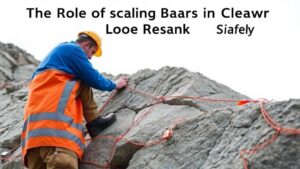Recognizing Silver Indicators in Vein and Replacement Deposits
Recognizing Silver Indicators in Vein and Replacement Deposits
The mining industry has long been fascinated by the exploration and extraction of silver, a precious metal that holds significant economic value. Recognizing silver indicators in vein and replacement deposits is critical for exploration geologists and mining engineers. This article delves into the various indicators that signal the presence of silver, established analytical methods, and real-world applications to enhance effective prospecting.
Types of Silver Deposits
Before discussing the indicators, it is essential to differentiate between the two main types of silver deposits: vein deposits and replacement deposits.
- Vein Deposits: These are minerals that fill fractures and openings in rock formations, where silver occurs alongside other metals like lead and zinc. Common examples include the famous Comstock Lode in Nevada.
- Replacement Deposits: These occur when silver replaces other minerals in a rock, often associated with sedimentary processes. An example would be the Rich Hill area in Arizona.
Key Silver Indicators in Vein Deposits
Identifying silver indicators in vein deposits requires an understanding of geological characteristics and mineral associations. The following indicators are commonly used:
- Mineral Associations: Silver is often found in conjunction with minerals like galena (PbS) and sphalerite (ZnS). presence of these sulfide minerals can serve as a precursor to silver deposits.
- Hydrothermal Alteration: Geological processes such as hydrothermal activities can lead to the alteration of surrounding minerals, resulting in the formation of veins. Indicators include quartz veining and other alteration signatures like sericitization.
- Geochemical Anomalies: Assays that show elevated concentrations of silver alongside elements like arsenic and antimony can indicate potential silver-rich zones.
Key Silver Indicators in Replacement Deposits
Replacement deposits present a different set of indicators due to their sedimentary nature. Key indicators include:
- Host Rock Composition: The presence of specific carbonate or clastic sediments, commonly limestone or dolostone, may suggest areas favorable for silver replacement.
- Secondary Minerals: The occurrence of minerals like cerussite (PbCO3) and anglesite (PbSO4) can indicate the weathering and replacement processes that concentrate silver.
- Stratigraphic Relationships: The study of vertical and lateral changes in rock layers can reveal potential economic concentrations of silver.
Analytical Techniques for Recognizing Silver Indicators
Several analytical techniques have been developed to assist geologists and miners in recognizing silver indicators. Here are a few noteworthy ones:
- Geochemical Analysis: Techniques such as Inductively Coupled Plasma Mass Spectrometry (ICP-MS) allow for precise detection of trace elements, enhancing the identification of silver mineralization.
- Geophysical Methods: Tools like resistivity surveys and induced polarization (IP) can help characterize subsurface rock properties, helping to delineate potential silver-bearing structures.
Case Studies and Real-World Applications
There are numerous examples where recognizing silver indicators has led to successful exploration projects:
- Fresnillo District, Mexico: The identification of high-grade silver veins alongside geochemical anomalies significantly contributed to the establishment of one of the worlds largest silver producers.
- Silver Valley, Idaho: Here, increased lead and zinc concentrations were vital in recognizing potential silver-rich areas, leading to successful mining operations.
Conclusion
Recognizing silver indicators within vein and replacement deposits is a multifaceted process that incorporates geological, geochemical, and geophysical techniques. Understanding the associated minerals and alteration processes is paramount for successful exploration. By employing modern analytical methods and studying successful case studies, exploration efforts can be significantly improved, ultimately leading to successful mining operations.
As the demand for silver continues to rise in various industries, the knowledge of these indicators becomes ever more crucial, ensuring that responsible and effective mining practices can be pursued.



